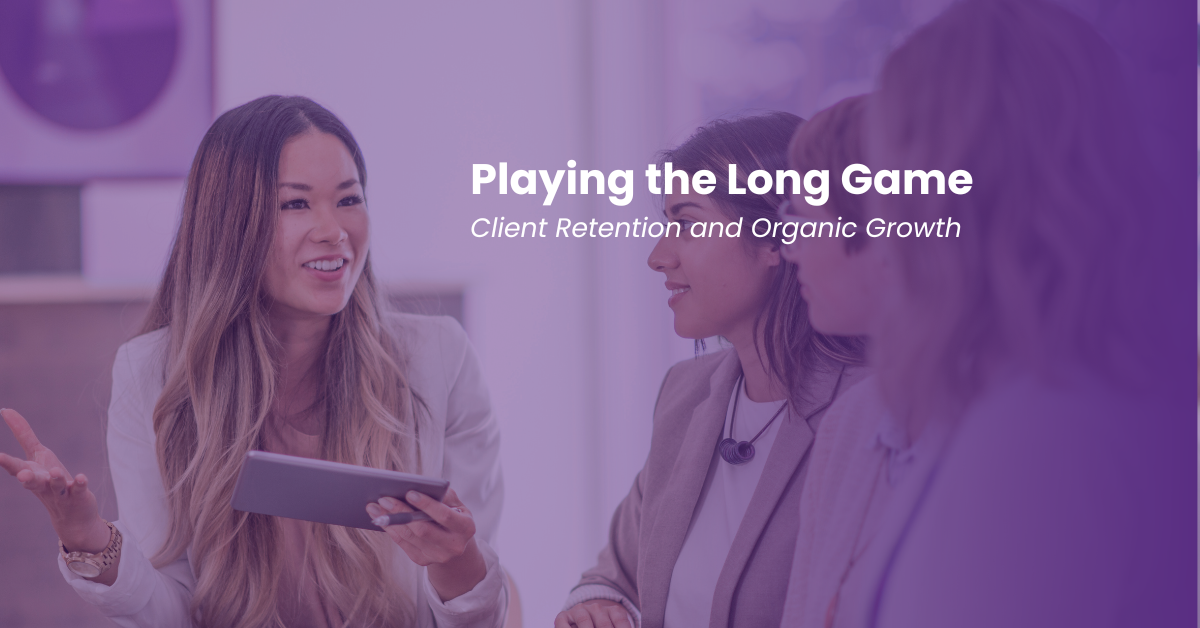Fighting the commoditization of advice
It’s been a tumultuous year. Business owners are hyper-focused on monitoring their company’s...

Client Retention and Organic Growth
Everyone understands the concept of compounding returns. Professional advisors preach this to their clients all the time. But in running our own practices, do we practice what we preach?
The compounding effect I am referring to is a focus on client retention and organic growth.
When I was running a professional services firm, our KPI for this was Net Retention Rate. This can be defined multiple ways, but the way we did it was take your book of business for a year and how much they produced in fees, then take that same book of business and see what they produced in fees the following year. Anything less than 100% means you have a leaky bucket (and trust me, there were times we had to do some patch-work), and new business is needed just to stay flat, let alone grow i.e. you’re on the hamster wheel. This metric works in wealth management as well, but just with assets under management, adjusted for market returns.
By maintaining your client base and generating growth within that existing portfolio, it allows for the foundation of your firm to be steady, and customer acquisition can the profit that comes from it, can be used to incentivize performance and re-invest in technology and L&D. Without this foundation on net retention (which organic growth pushes up), margin from new customers has to be used to cover existing operating costs.
According to Schwab’s annual RIA benchmarking report, the average organic growth rate was 5%, while the top firms produced 12% (meaning an additional 7% of revenue could fall to the bottom line or be re-invested). Similarly, client retention came in at 97%, so an average NRR would be just shy of 102%.
So, what are the keys to actually producing a high net retention rate? Here are a few primary practices to focus on:
At interVal, we focus on providing professional advisors a platform to facilitate items 1-3. By discussing valuation goals and timelines, it cements you as an advisor that wants to be along for the journey with your client, and along the way identify the needs you specifically can help them with to be set-up for that success. Identifying excess working capital to invest, discussing capital structure, mitigating risks that impact business value, etc all come through conversations facilitated through the insights in interVal.
As one wealth advisor recently told us “You talk about building a fence around the client – interVal is a pretty high fence”
By prioritizing client retention, fostering organic growth, and leveraging tools like interVal to deepen relationships and insights, advisors can build a stronger foundation for their firms—one that not only protects the client base but also drives meaningful, sustainable growth for years to come.
Author: Dave Bunce
It’s been a tumultuous year. Business owners are hyper-focused on monitoring their company’s...
SMBs are navigating a financial landscape filled with...
Welcome to the final post in our series on understanding business valuation. If you’ve stuck with...